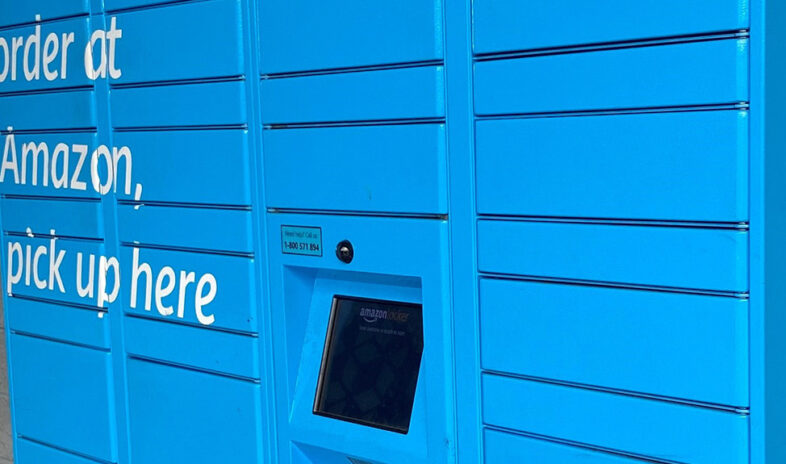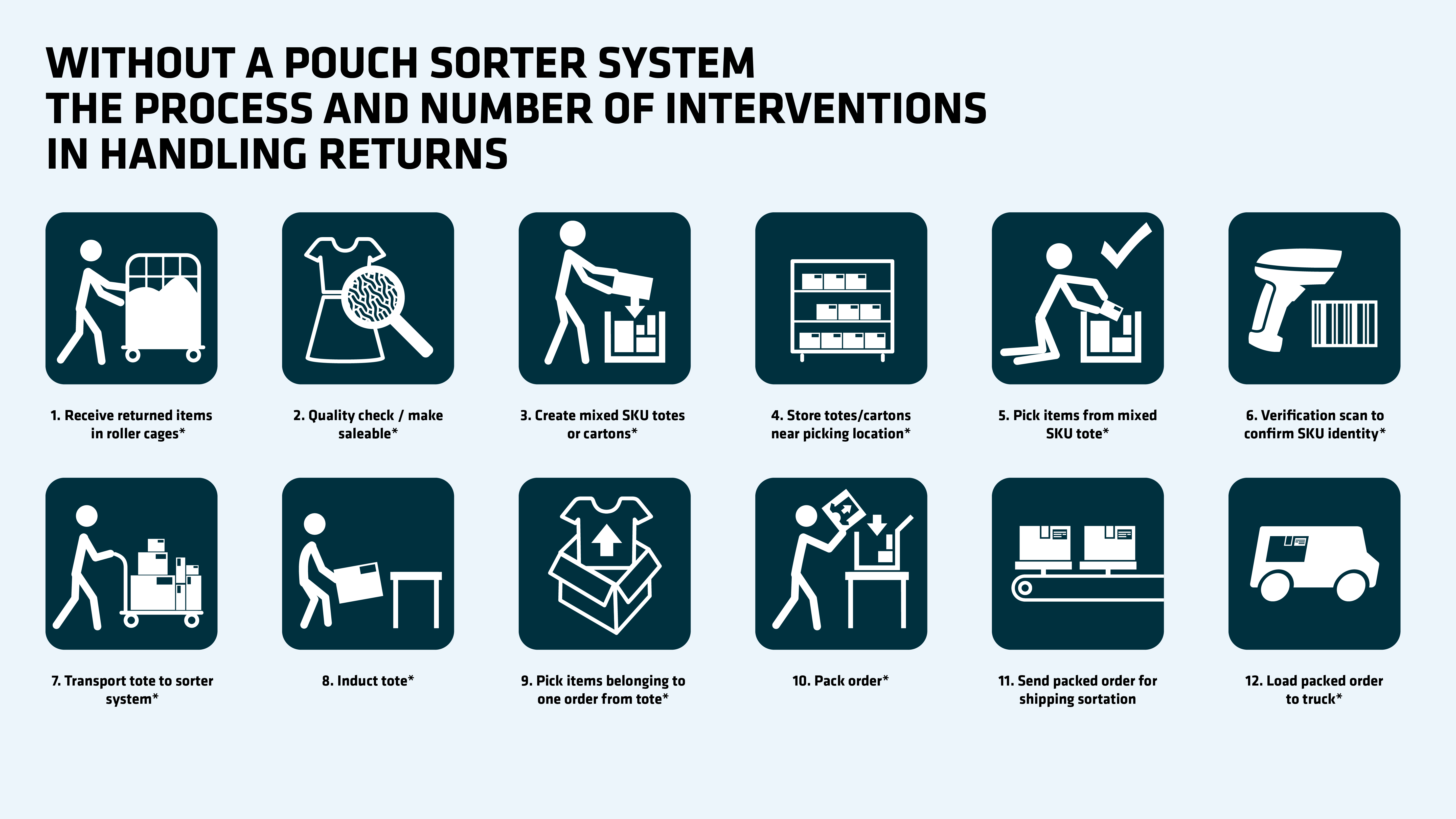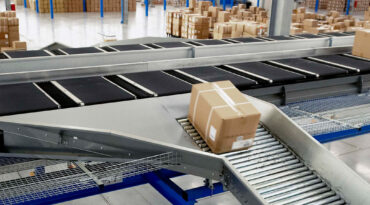In an increasingly competitive industry, it is challenging for logistics centres to be both optimally efficient and cost-effective.
To achieve this, logistics centres must streamline operations, optimise inventory management and take advantage of modern technology to help them become more effective and flexible whilst reducing expenses.
This article will consider the typical pain points of logistics centres and how using a pouch sorter can help them to lift their bottom line – most notably how the system design uses automation and data to reduce the number of human touches and optimise the centre’s processes.
How labour and cost pressures are driving change
A high number of human touches continues to be the biggest pain point at many warehouse and distribution centres – not only is labour a huge cost but it has been increasingly hard to source in recent years.
Logistics centres still using mostly manual processes are finding that recruitment, training and retention have become much harder because workers are increasingly being drawn to tech-savvy roles with better opportunities for upskilling and career advancement.
Increasingly fulfilment and distribution centres need to look within to shave their costs. Very often optimised automation reduces a centre’s operational costs – even if the initial investment might at first appear large – and every possible cost saving is vital right now in what is an increasingly competitive industry.
The cost benefits of effective automation can quickly outweigh the cost just a few years into the life-cycle, enabling the fulfilment centre to make savings.
This makes automation not just an efficiency upgrade, but a strategic necessity for centres to stay competitive.
Why partial automation still leaves efficiency gaps
Semi- and fully-automated logistics centres are not immune to efficiency problems – the number of human touches still tends to be very high, and the explosion in e-commerce has increased pressure on their ability to fulfil their system throughput.
The centres are fast realising the capacity limitations of the traditional sortation technologies they invested in 15-25 years ago – particularly if they continue to mostly use manual or semi-automated processes to pick items, order by order.
And even with automation in place, changing order profiles can create bottlenecks if the system isn’t designed for flexibility.
The order structure problem – and how pouch systems solve it
Let’s consider, for example, what will happen to the efficiency of a logistics centre mainly using manual processes when the order structure is changed.
Firstly, it will hinder the role of the putwall. Built to purpose in terms of the order structure, if the order structure decreases or increases, the putwall will result in a loss of efficiency.
When the order structure decreases, the number of putwall locations (or orders) remains the same, and the number of items per picking batch also decreases. This will result in a lower picking performance.
When the order structure increases, orders might no longer fit into a single compartment of the putwall, which means an order ends up being distributed to more than one compartment, which requires extra manual attention at the putwall. This results in fewer orders handled in a picking batch. In addition, this will have an upstream ripple effect on the number of items being picked per batch, which results in a lower picking performance.
A well-designed pouch system is more flexible in terms of beneficial functions and features, and it can be adjusted to varying order structures.
And the efficiency story doesn’t end with outbound fulfilment – returns handling is another area where touches can pile up and costs can spiral.
Returns: a hidden cost ripe for automation
The pouch system reduces manual interventions when dealing with returns – potentially a huge drain on warehousing resources handling retail segments such as fashion.
Given today’s huge number of returns in e-commerce, the pouch system design is virtually tailor-made for segments such as homeware, toys, packaged food, hardware, spare parts and fashion, given its handling capacity.
Conventional warehousing often uses more than double the touches of a pouch system – as it struggles with the reclassification, transportation, storage and monitoring of the returned items.
Handling returns without a pouch sorter system









